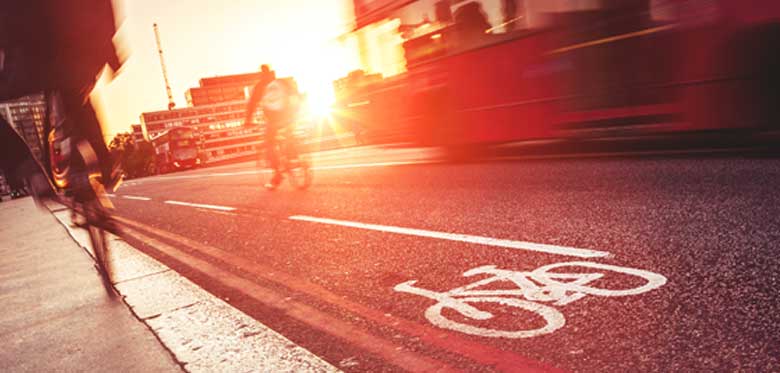Government statistics have revealed that between May and June 2020, 38% of people cycled more than before the COVID-19 pandemic. With a 2nd national lockdown looming and coronavirus infection rates increasing, cycling may become a more popular mode of transport.
Cycling is a great way to stay fit and healthy whilst helping the environment and saving money at the same time. With cycling becoming more popular, I fear this may mean that the number of accidents involving cyclists may also increase. Cyclists are vulnerable road users and have less protection on the road than motorists. Unfortunately, when cyclists are involved in accidents, all too often we see significant injuries being sustained. It is therefore important you are well prepared before taking to the roads on a bike.
Top tips for staying safe
Wear a helmet – it is strongly advised that you wear a good quality, well-fitted cycle helmet. Make sure it is worn according to the instructions and is not damaged. Wearing a helmet reduces the chances of suffering fatal or serious brain injuries in the event you are involved in an accident.
Prepare your bike – make sure you give your bike a thorough check before using it and familiarise yourself with its functions.
Always use your lights when visibility is poor and it is dark. You must have a white light on the front of your bike, a red light on the back, red reflectors at the back and amber reflectors on the pedals. It is illegal to cycle without them!
Be seen – the Highway Code recommends that you wear appropriate clothes for cycling. Avoid wearing clothes which may get tangled in the chain, or in a wheel or may obscure your lights. Light-coloured or fluorescent clothing which helps other road users to see you in both daylight and poor lighting is advised as well as reflective clothing and/or accessories in the dark.
Plan your journey – Cycling UK offers a guide to cycle routes that can help you plan your journey and find safer routes to cycle that have designated cycle lanes etc.
Ride decisively and keep clear of the kerb. Think about your positioning on the road and cycle in the centre of the cycle lane (if there is one). When leaving a cycle lane, check before pulling out that is safe to do so. Use of cycle lanes is however not compulsory.
Provide clear signals to show other road users what you plan to do. Make eye contact and look at them where possible to help ensure they have seen you and your signals.
Anticipate movements – remember to anticipate sudden movements from the vehicles travelling in front of you as they may need to perform an emergency stop etc. and you need to ensure there is enough space between you and the vehicle ahead so you can stop safely. Road conditions can impact braking distances so this is also something to be mindful of.
Stay vigilant and look out for any potential hazards or obstructions.
Avoid passing a vehicle on the inside as you may not be seen. Buses and large vehicles have blind spots which make it hard for them to see you cycling alongside them, especially if they are turning at a junction. It is better to hold back and wait behind the vehicle.
Where possible, try to maintain social distancing when cycling, especially when you are stopped at traffic lights and at crossings.
Wash your hands for at least 20 seconds or sanitise then before and after cycling.
For further information and guidance, please consult the Highway Code for cyclists.
What to do if you are in a cycling accident
The first thing you should do is make sure you are in a safe place and are ok - you should get checked over by a paramedic if it is a serious injury.
If you are well enough after the accident it is important to make sure you gain as much detail as you can of the people involved. For example: the driver’s name, vehicle registration number, model of the vehicle, address, phone number, insurance company and a policy number. If there are any witnesses try to get at least their name, address and phone number. If you have a mobile phone with a camera facility then it is a good idea to take photos of the accident location, road conditions and damage, if any, to your bike/vehicle involved. If you are taken straight to hospital the police will do this.
If you have been involved in a cycling accident that was not your fault then you could be entitled to compensation. Our expert solicitors will guide you through every stage of your accident to make sure you gain the compensation you deserve. Cycling accidents can be complicated and we aim to provide you with the quickest and most effective service whilst still achieving the maximum amount of compensation. Give us a call today on 0161 696 6235 to talk to a member of our team.




Comments